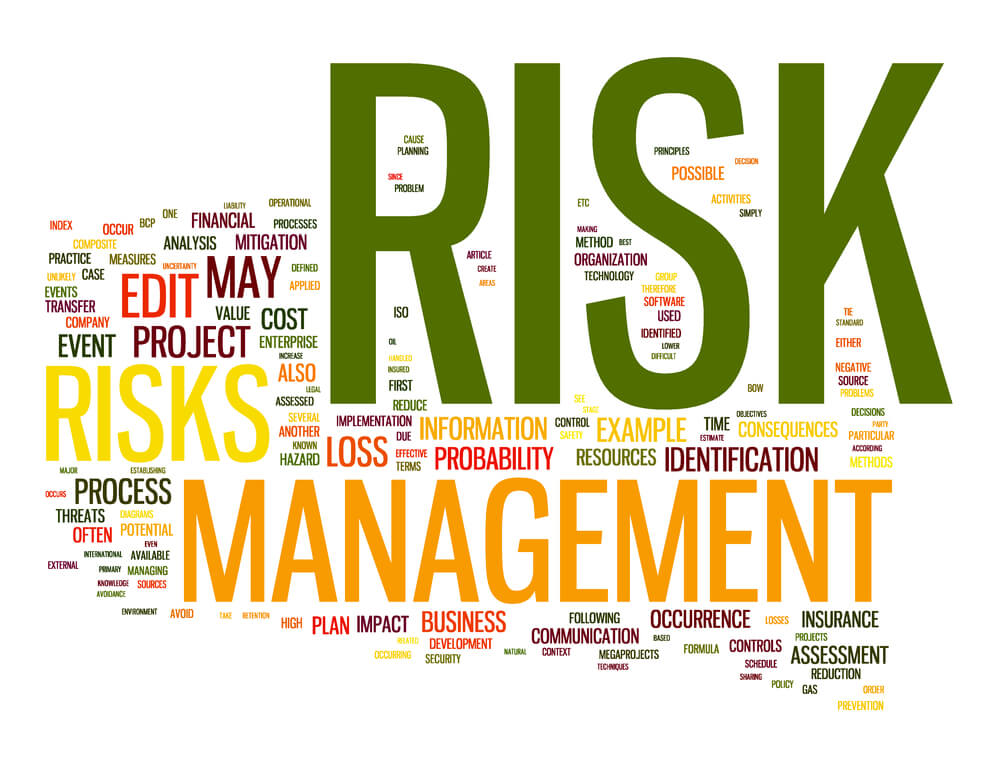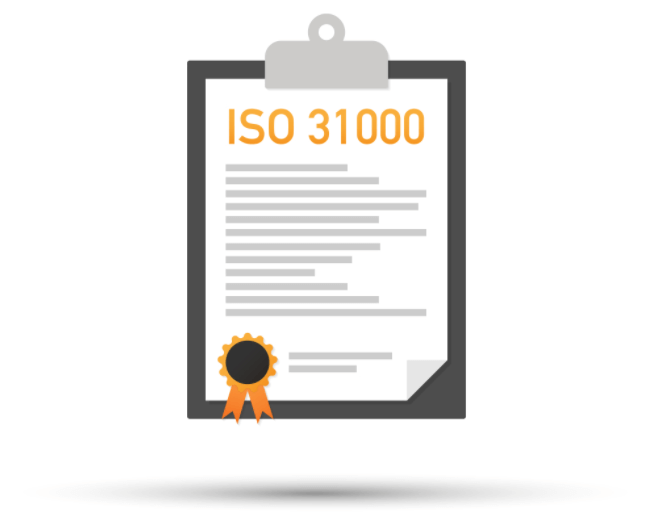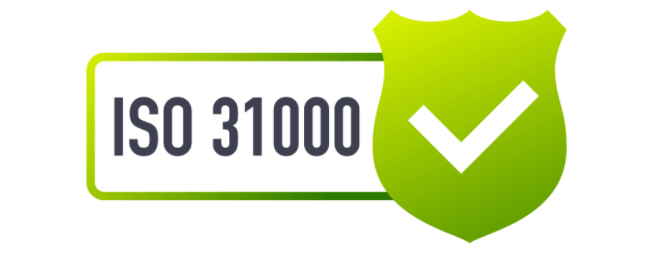What is ISO 31000:2018 Risk Management – Guidelines?
ISO 31000:2018 provides guidelines on managing risk faced by organizations. These guidelines can be applied to any organization and its context. The standard provides a common approach to managing any trouble, not industry or sector. It can be used throughout the organization’s life and applied to any activity, including decision-making at all levels.
ISO 31000 is the Gold Standard for implementing risk management in any organization or structure. The standard can be implemented for small, medium, and large-scale enterprises across product lines, functional lines, and decision-making processes.
- It gives a structured, credible foundation for risk and management discussions.
- The standard gives a starting point for a risk management process if you don’t have one.
- ISO 31000 gives a standard vocabulary for talking about risks and risk management.
- The standard also gives a baseline for comparing and assessing risk management processes.
- Assists in managing risks effectively through the application of the risk management process;
- Ensures that information about risk derived from the risk management process is adequately reported; and
- Ensures that this information is used as a basis for decision-making and accountability at all appropriate organizational levels.
- The purpose is to help organizations integrate risk management into their activities and functions.
- Not a document but a procedure.
- Need to understand the organization’s structure and context.
Quick Navigation
Development of ISO 31000
ISO 31000:2018 is a generic risk management standard. The official name of the standard is ISO 31000:2018 Risk Management Guidelines.
It was published in February 2018 and is the second ISO standard edition. It cancels and replaces the ISO 31000:2009, which is now obsolete. In addition, it was updated to streamline the content and respond to changing stakeholders and expectations.

The International-level standard specifies specific guidelines and practices for businesses to follow in their risk management system. It provides a comprehensive approach to managing risk in every business area, including financial loss, data breaches, intellectual property loss, safety risks, etc.
Removing uncertainties in business is essential to promote growth and efficiency. This international standard for risk management lays down detailed regulations and principles for businesses to manage and mitigate business risks, enhancing the value of their output.
- ISO 31000 was developed by ISO’s technical committee on risk management, ISO/TC 262.
- Other standards in its portfolio, which support ISO 31000, include technical report ISO/TR 31004 and risk management.
- Guidance for implementing ISO 31000, and International Standard ISO/IEC 31010, Risk Management – Risk Assessment techniques, developed jointly with the International Electro-Technical Commission.
What is ISO 31000 Certification?
ISO 31000 Certification is a global standard for risk management. It gives insight into the various activities that go into the risk process. Communication and monitoring are umbrella activities to be undertaken throughout the risk management process.

There has been a paradigm shift in business and how we do business in the wake of the current COVID situation. New risks and global barriers are being experienced where travel is restricted, and working from home has become a new norm. Under all these circumstances, unknown risks have come to the forefront, new cyber threats, operational and financial risks, and the like. There is a need to build a risk management framework and do the risk assessment process on an ongoing basis.
Advantages of Adopting ISO 31000
- Since risks associated with different strategic options will be thoroughly analyzed, better strategic decisions will enable.
- Due to weightage given to tactics and risks involved in the alternatives available.
- Enhance operations, events that can cause disruption will be identified.
- Compliance; the risks associated with failure to comply with statutory and customer obligations will be recognized.
What are the benefits of ISO 31000?
Around the world, organizations face many forms of risk, which may affect their chances of success. Without risk, there is no reward/gain or progress. Organizations cannot maximize opportunities and minimize threats unless this risk is managed effectively.
That’s why ISO developed ISO 31000 for risk management. In a world of uncertainty, ISO 31000 is made for any organization seeking clear guidance on risk management.
Managing risk should be part of the decision-making process of the organization. And it must be the responsibility of the management to follow the guidelines of risk management in decision-making processes effectively. The benefits of implementing ISO 31000 are:
- Establish a reliable basis for decision making, planning, and improving controls system to minimize losses.
- Proactively improve operational efficiency and governance.
- Build stakeholder confidence and trust in your use of risk techniques.
- Improve management system performance and resilience.
- Enhance health and safety performance as well as environmental protection.
- Respond to change effectively (identifying opportunities and threats) and protect your business as you grow.
- Effectively allocate and use resources for risk treatment.
- Improve loss prevention and incident management to minimize losses.
- Improve organizational learning.
What are the Principles of ISO 31000?
The ISO 31000 Principles are the foundation for managing risk and must be considered when establishing the organization’s risk management framework and processes. The principles enable organizations to manage the effects of uncertainty on their objectives.
- Framework and processes should be customized and proportionate.
- Appropriate and timely involvement of stakeholders.
- Adoption of a structured and comprehensive approach.
- Interweave RM into organizational activities.
- The RM anticipates, detects, acknowledges, and responds to change.
- Risk Management explicitly considers any limitations of available information.
- Human and cultural factors influence all aspects of risk management.
- Risk Management is continually improved through learning and experience.
The core of risk management principles is Value Creation and Protection. Effective risk management implementation requires the following elements:
- Integrated
- Structure and Comprehensive
- Customized
- Inclusive
- Dynamic
- Best Available Information
- Human and Cultural Factors
- Continual Improvement
ISO 31000 thrives on principles that should be considered when implementing a risk management framework for any organization.
ISO 31000 Certification in Pakistan
Organizations in Pakistan are experiencing an increased focus on risk management. The challenge for companies is to evaluate how much risk they can take to meet as they strive to achieve the organization’s objectives and deliver value. The solution to this challenge is implementing a formal and structured Enterprise Risk Management (ERM) system and processes that effectively identify, assess, and manage risk within acceptable levels.

Risk is now defined as the “effect of uncertainty on objectives.” In November 2009, the International Organization of Standardization (ISO) released the first international risk management standard, ISO 31000:2009 Risk Management.
What is ISO 31000 Certification Cost?
ISO 31000 Certification helps streamline the business process according to the business objectives and helps in taking corrective actions. The ISO Certification Cost is dependent on various factors such as
- The Audit Time
- Requirement,
- of People Trained,
- of Sites from which the organization operates, and more.
Why Choose Us?
TUV Austria Bureau of Inspection & Certification provides ISO 31000 Certification services to mid-size & large-size corporates in Pakistan. We are a modern risk management firm focusing only on risk management advisory. We strive to provide quality services to clients operating in various industries.
TUV Austria Bureau of Inspection & Certification team has expertise in all areas of risk management and has established excellent relationships with our business partners and alliances. With our knowledge and associations, we want you to feel comfortable when selecting us for your certification needs.
In Addition, to ISO 31000 service, we also offer a range of complimentary services:
- ISO 9001 – Quality Management System
- ISO 14001 – Environmental Management System
- ISO 45001 – Occupational Health & Safety Management System
- ISO 55001 – Asset Management — Management Systems Requirements
- ISO 27001 – Information Security Management System
- ISO 20000 – IT Service Management System
- ISO 22000 – Food Safety Management System
- HACCP – Food Safety Management System
- Halal Certification
- ISO 21001 – Educational Organizations Management System
- ISO 29990 – Learning Services Management System
- ISO 20121 – Sustainability Event Management System
- ISO 22301 – Business Continuity Management System
- ISO 37001 – Anti-Bribery Management System
- ISO 28000 – Supply Chain Security Management System
- ISO 13485 – Quality Management Systems for Medical Devices
- ISO 39001 – Road Traffic Safety Management System
- ISO 22716 – Good Manufacturing Practices for Cosmetics
FAQS
What is ISO 31000?
ISO 31000 is a family of standards relating to risk management codified by the International Organization for Standardization. The purpose of ISO 31000:2009 is to provide principles and generic guidelines on risk management. ISO 31000 seeks to provide a universally recognized paradigm for practitioners and companies employing risk management processes to replace the myriad of existing standards, methodologies, and paradigms that differ between industries, subject matters, and regions.
What is Risk?
Risk is defined as “An uncertain event or set of events that, should it occur, will affect the achievement of objectives.” All organizations, including temporary ones concerned with programs or projects, will encounter uncertain events when trying to achieve their objectives. These uncertain events may arise inside or outside the organization.
What is Risk Management?
Every organization manages its risk somehow, but not always in a visible, repeatable, or consistent way to support effective decision-making. The aim is to improve internal control and help better decision-making by understanding individual risks and the overall risk exposure that exists at a particular time. This provides a disciplined environment for proactive decision-making.
- The task of risk management is to ensure that an organization makes cost-effective use of a risk management process that includes a series of well-defined steps.
- The term ‘risk management refers to the systematic application of principles, an approach, and a process to identifying and assessing risks and then planning and implementing risk responses.
What is the purpose of Risk Management?
The purpose of risk management is the creation and protection of value
- Improving Performance
- Encouraging Innovation
- Supporting the achievement of objectives.